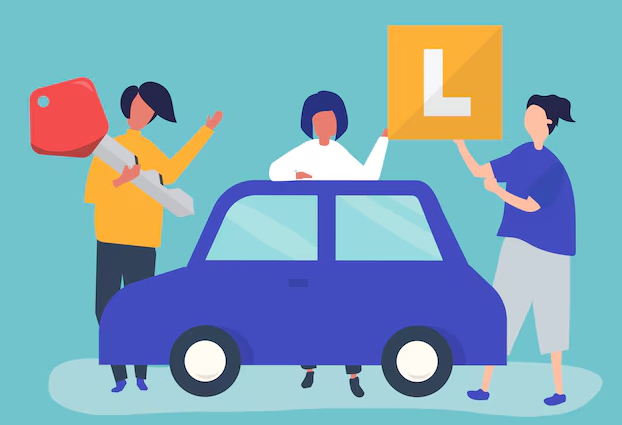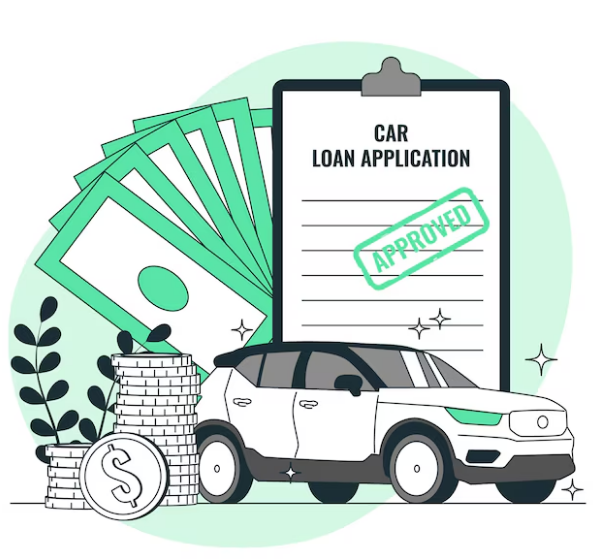Buying a car is a significant financial commitment for many Americans, often requiring the help of an auto loan. While these loans make it possible to afford a vehicle, they can also lead to high monthly payments if not managed carefully. Understanding how to navigate the complexities of auto loans can help you avoid the burden of excessive payments and keep your finances in check.
The key to avoiding high auto loan payments lies in making informed decisions throughout the car-buying process. From choosing the right vehicle to securing the best loan terms, each step can impact your monthly payments. By taking the time to educate yourself on these factors, you can drive off the lot with a car that fits both your lifestyle and your budget.
Choosing the right vehicle

One of the most critical factors in determining your auto loan payments is the price of the vehicle you choose. While it may be tempting to opt for a new, high-end model with all the latest features, it’s important to consider how this decision will affect your loan and, ultimately, your monthly payments. Selecting a car that meets your needs without exceeding your budget is a crucial first step in avoiding high payments.
New cars tend to lose value quickly, so it’s worth considering whether a used or certified pre-owned vehicle might be a better option. These cars are often more affordable and can significantly reduce the amount you need to borrow, which in turn lowers your monthly payments. Additionally, used cars typically have lower insurance costs, further reducing your overall expenses.
Another aspect to consider is the total cost of ownership, which includes not only the purchase price but also factors like fuel efficiency, maintenance, and repair costs. A vehicle with low operating costs can save you money over time, making it easier to manage your loan payments. Researching different models and comparing their long-term costs can help you make a more financially sound decision.
Securing the best loan terms
Once you’ve chosen a vehicle, the next step is to secure a loan with favorable terms. The terms of your loan, including the interest rate, loan term, and down payment, will directly affect your monthly payments. Understanding how these elements work together can help you negotiate a loan that minimizes your payments and keeps your budget intact.
One of the most important factors in determining your interest rate is your credit score. Lenders use your credit score to assess your risk as a borrower, with higher scores typically qualifying for lower interest rates. Before applying for an auto loan, it’s a good idea to check your credit report and address any issues that could be dragging down your score. Paying off outstanding debts, correcting errors on your report, and making all your payments on time can improve your score and help you secure a better loan rate.
Shopping around for the best loan terms is another crucial step in avoiding high payments. Different lenders, including banks, credit unions, and online lenders, offer varying rates and terms, so it pays to compare offers from multiple sources.
Don’t be afraid to negotiate with lenders to get the best possible deal, and consider getting pre-approved for a loan before you start shopping for a car. This not only gives you a clear idea of what you can afford but also strengthens your negotiating position when dealing with car dealerships.
Making a larger down payment
One of the most effective ways to reduce your auto loan payments is by making a larger down payment. The more you can put down upfront, the less you need to borrow, which directly lowers your monthly payments. A larger down payment can also help you qualify for a better interest rate, as it reduces the lender’s risk.
While it may be challenging to come up with a large sum of money for a down payment, the long-term savings can be substantial. If possible, aim to save at least 20% of the car’s purchase price for your down payment. This not only reduces your loan amount but also helps you avoid being “upside down” on your loan, where you owe more on the car than it’s worth.
If you don’t have enough saved for a large down payment, consider delaying your purchase until you can save more. In the meantime, you can continue to build your credit score and shop around for the best loan terms, which will further improve your chances of securing a loan with manageable payments.
Refinancing your auto loan
If you already have an auto loan and are struggling with high payments, refinancing might be an option worth exploring. Refinancing involves taking out a new loan to pay off your existing loan, ideally with better terms that lower your monthly payments. This can be especially beneficial if your credit score has improved since you first took out the loan or if interest rates have dropped.
When considering refinancing, it’s important to compare offers from multiple lenders to ensure you’re getting the best deal. Keep in mind that while refinancing can lower your monthly payments, it may also extend the length of your loan, which could increase the total amount of interest you pay over time. Be sure to weigh the pros and cons carefully before making a decision.
Another option to consider is refinancing with a shorter loan term. While this might not lower your monthly payments, it can help you pay off the loan faster and save money on interest in the long run. If your financial situation has improved since you first took out the loan, this could be a smart way to reduce the overall cost of your vehicle.
Avoiding high auto loan payments in the U.S. requires a combination of smart decision-making, careful planning, and a clear understanding of the factors that influence your loan. By choosing the right vehicle, securing favorable loan terms, making a larger down payment, and being mindful of additional costs, you can keep your payments manageable and protect your financial health.
Whether you’re buying your first car or refinancing an existing loan, taking the time to research your options and plan ahead can make all the difference. By following these strategies, you can enjoy the benefits of owning a car without the stress of overwhelming monthly payments.





